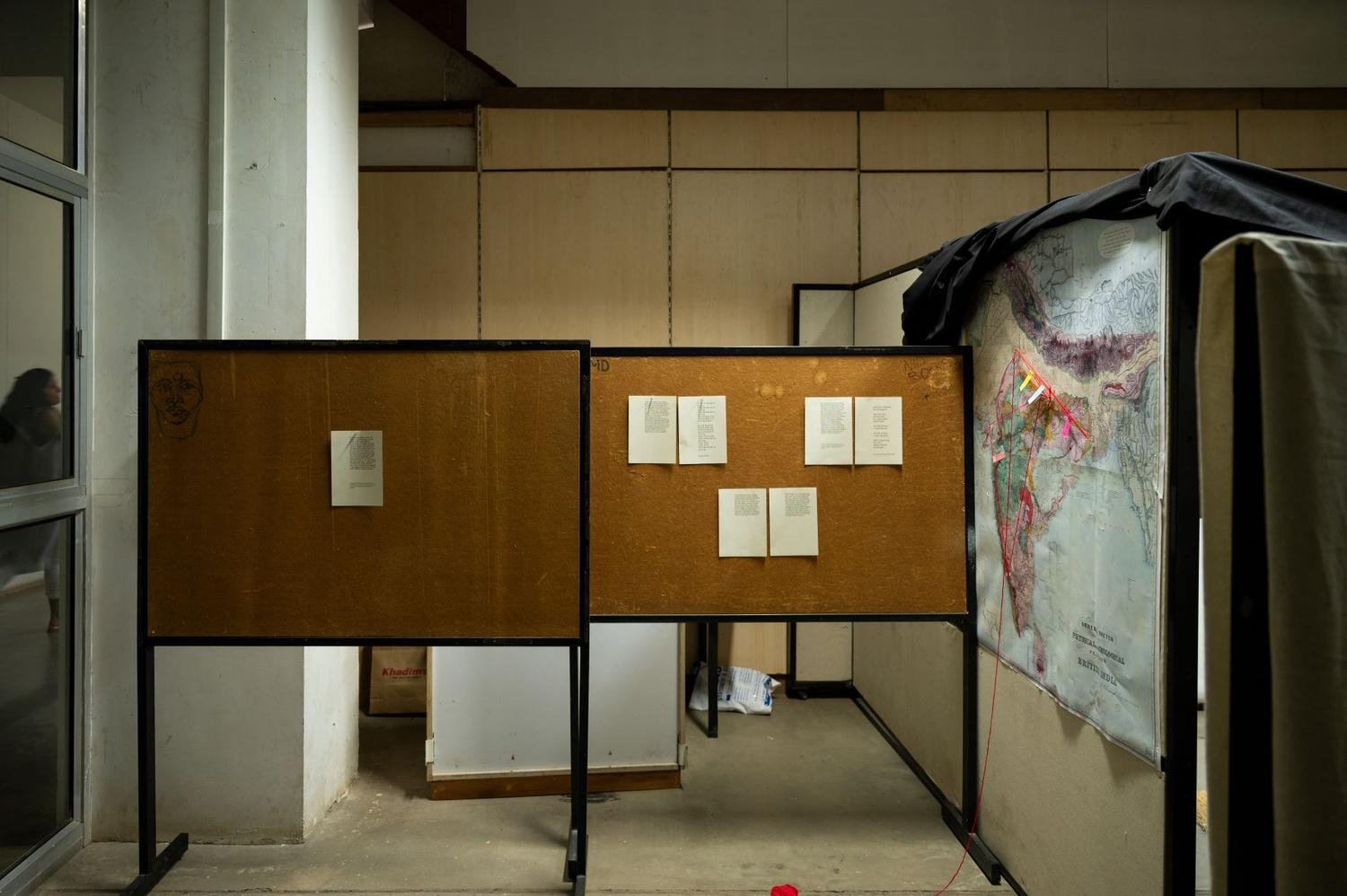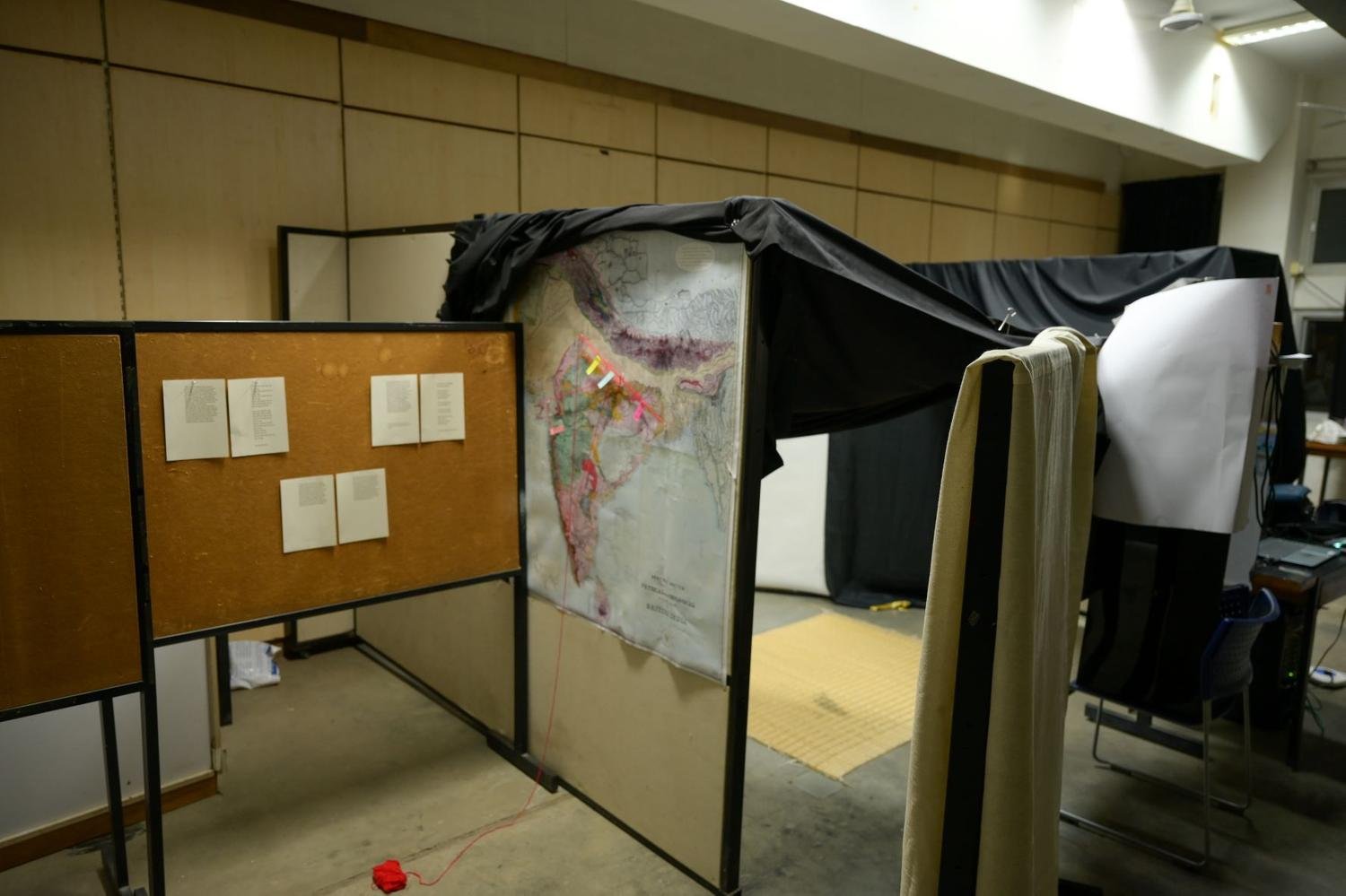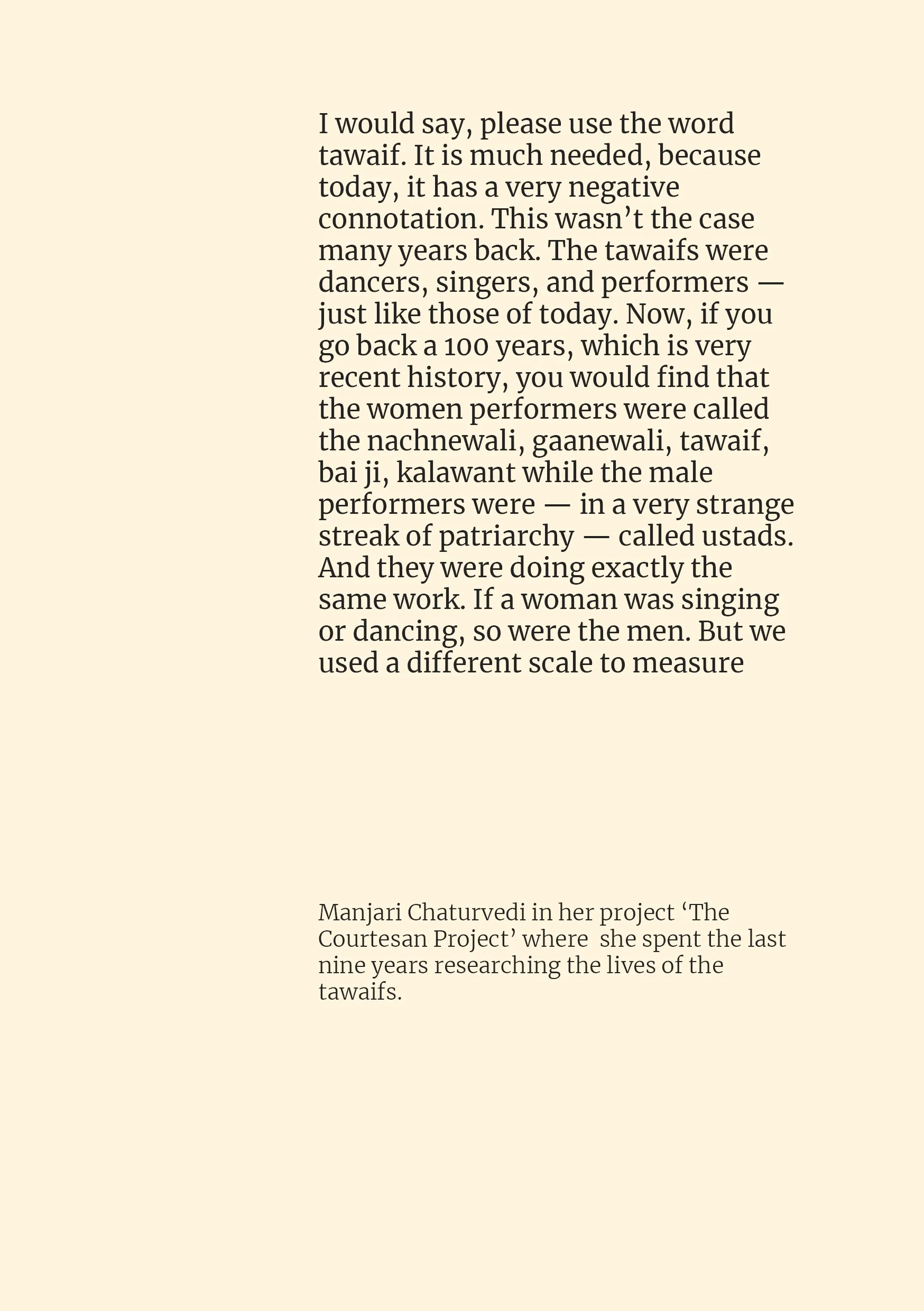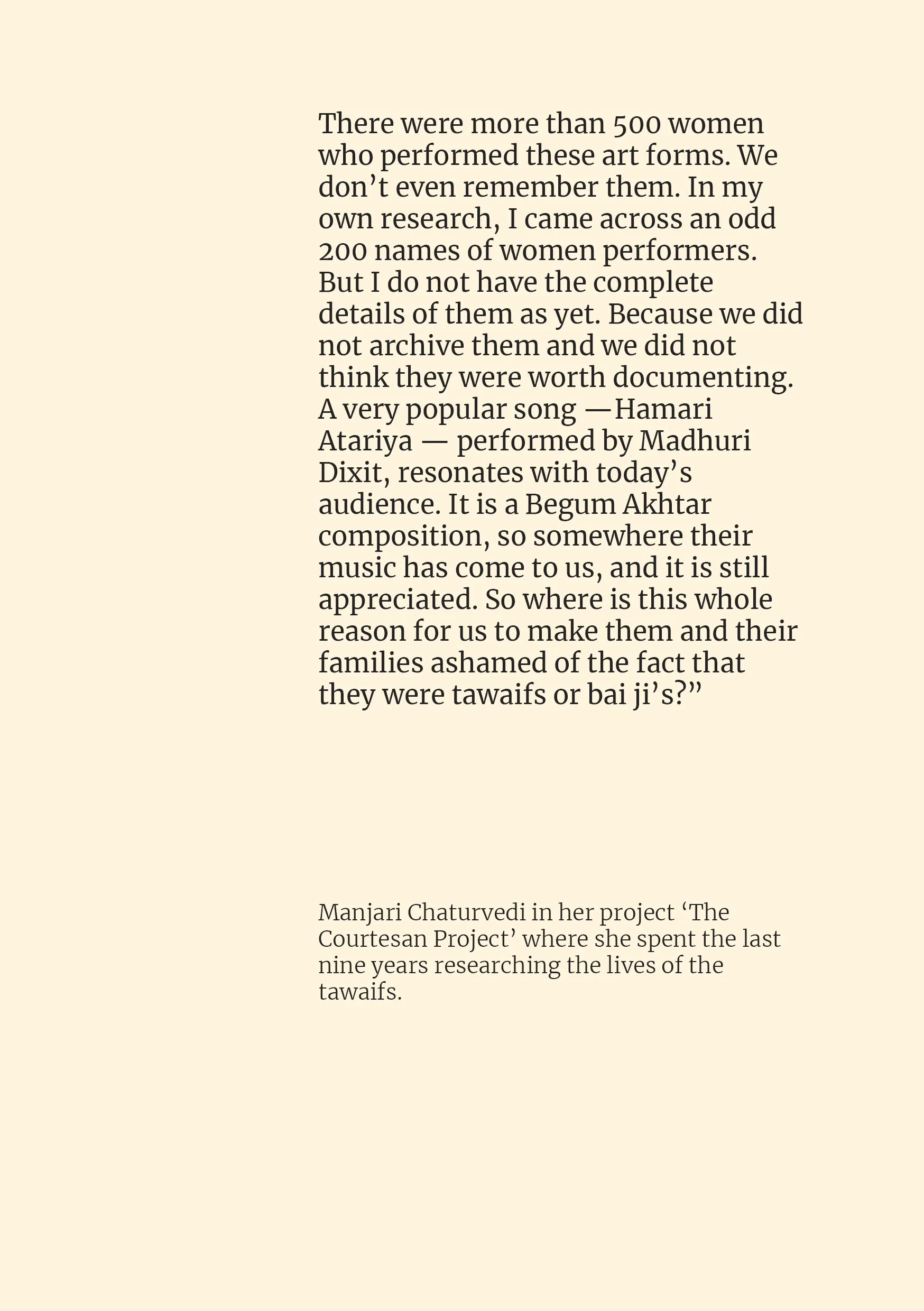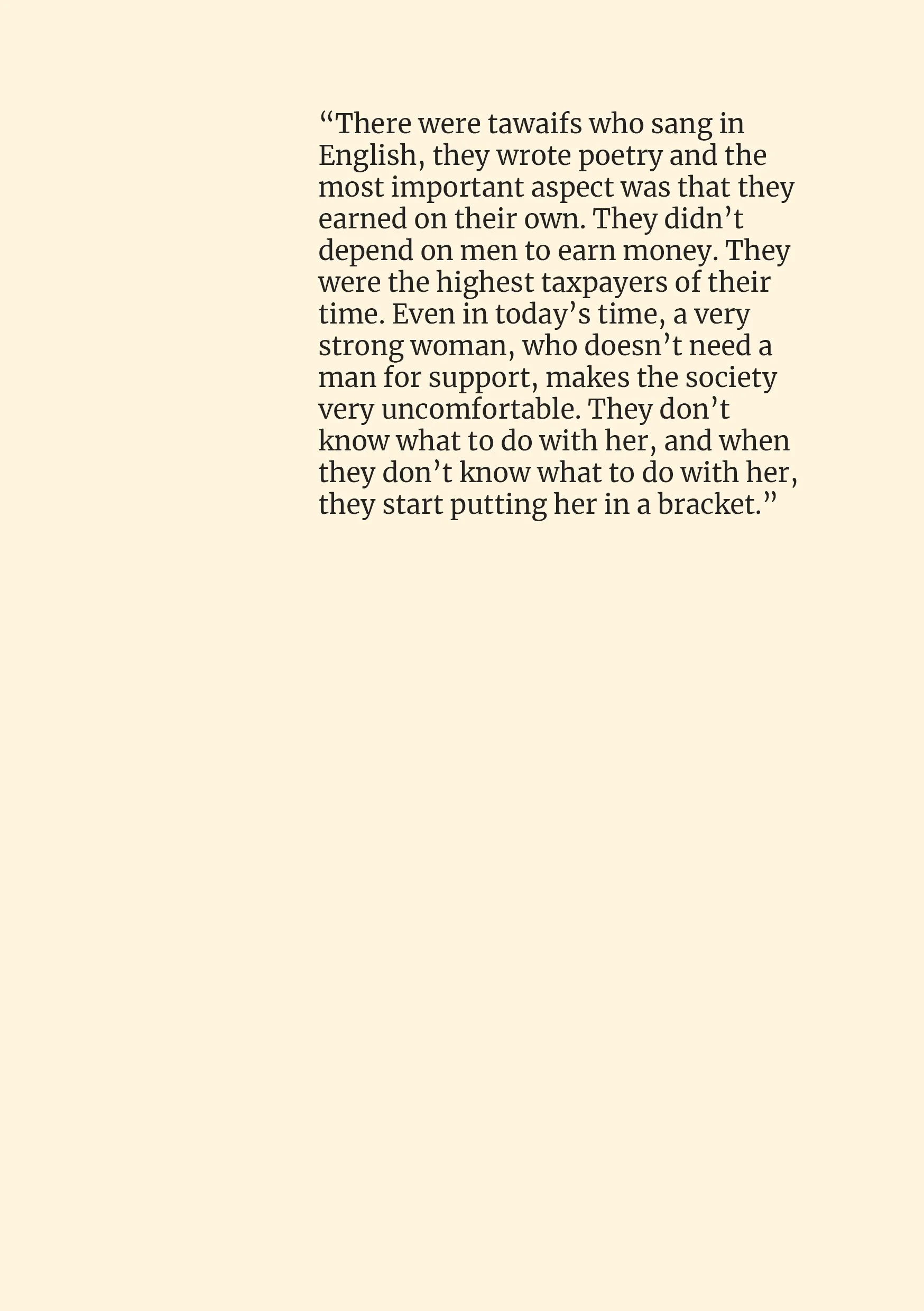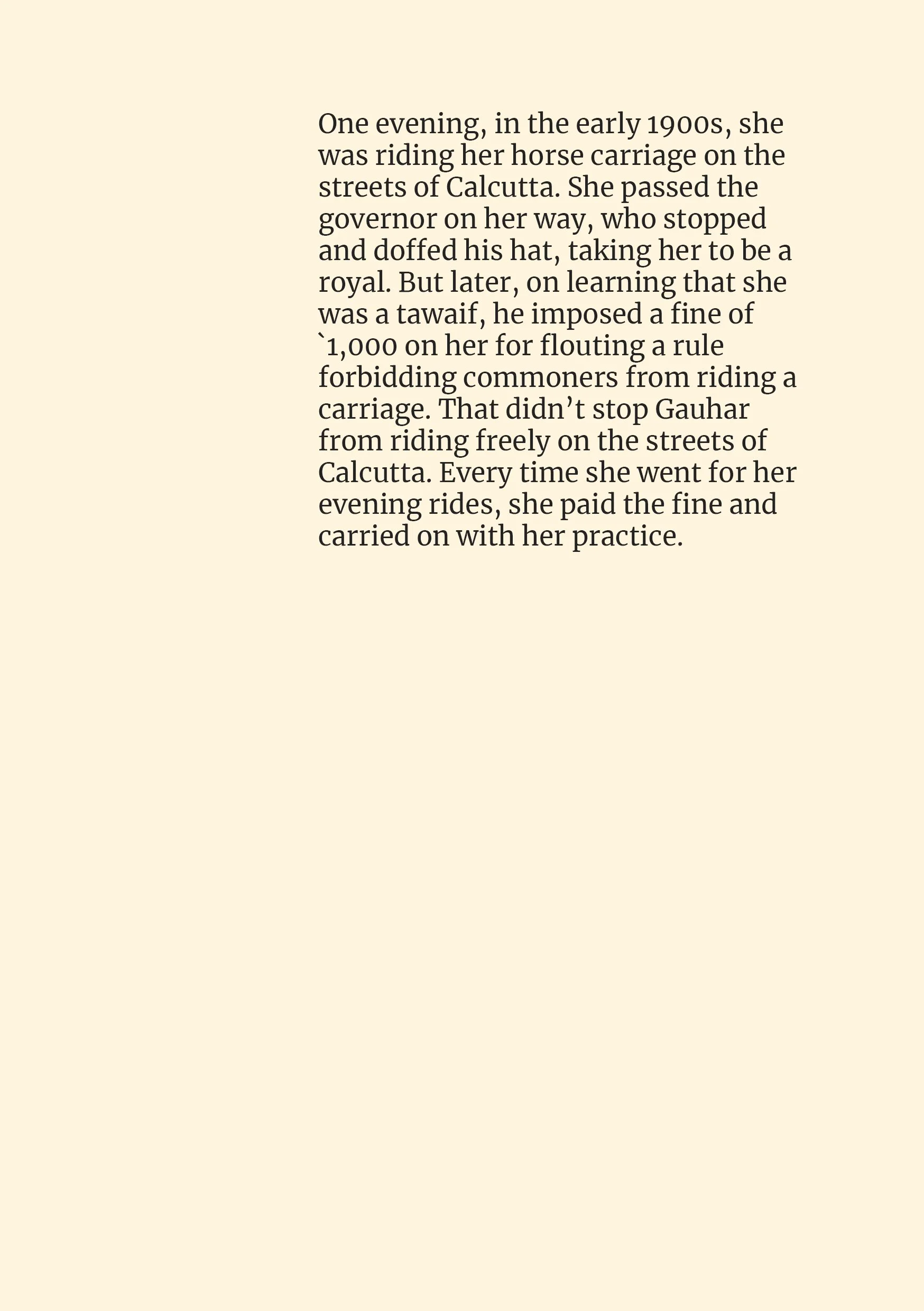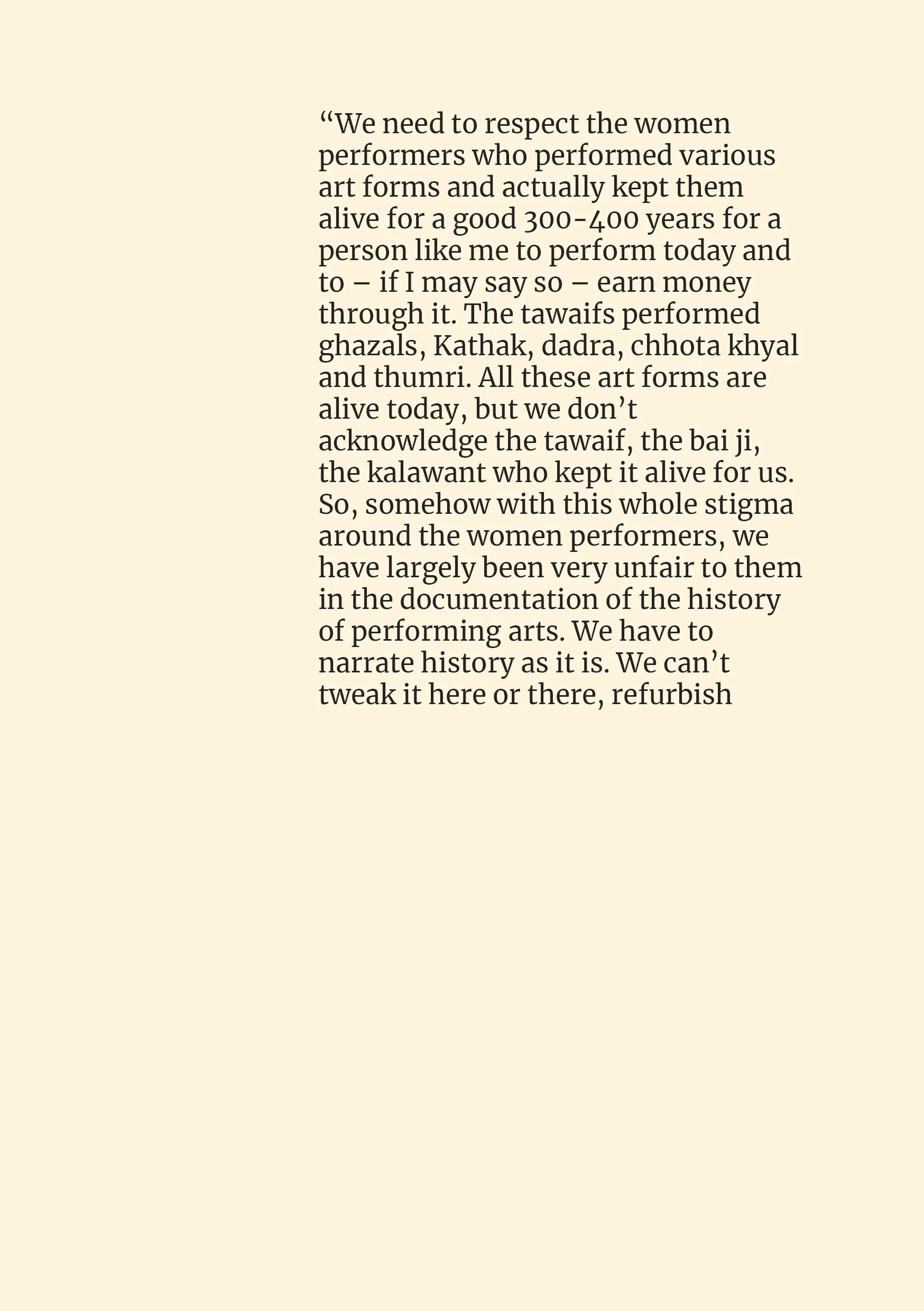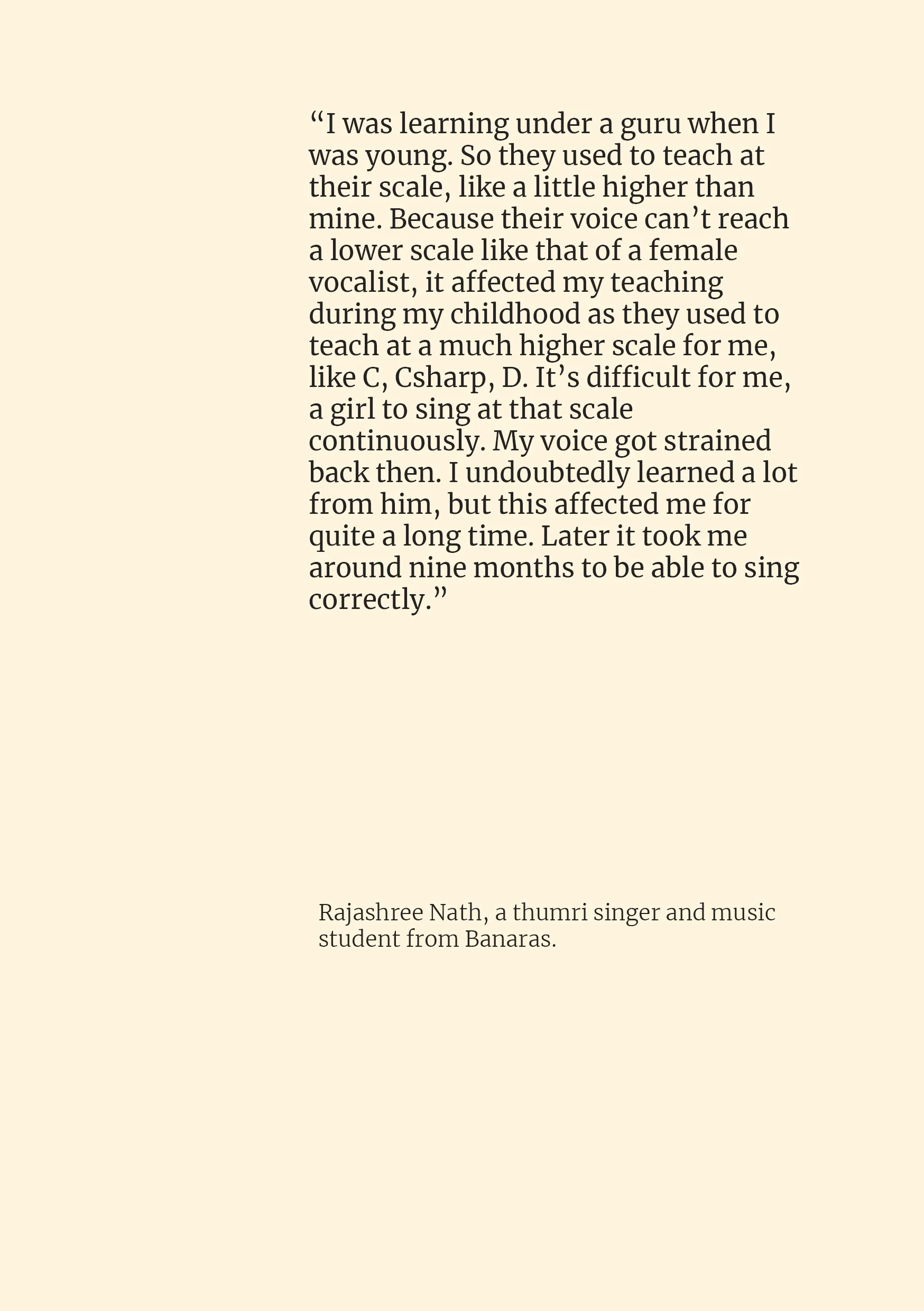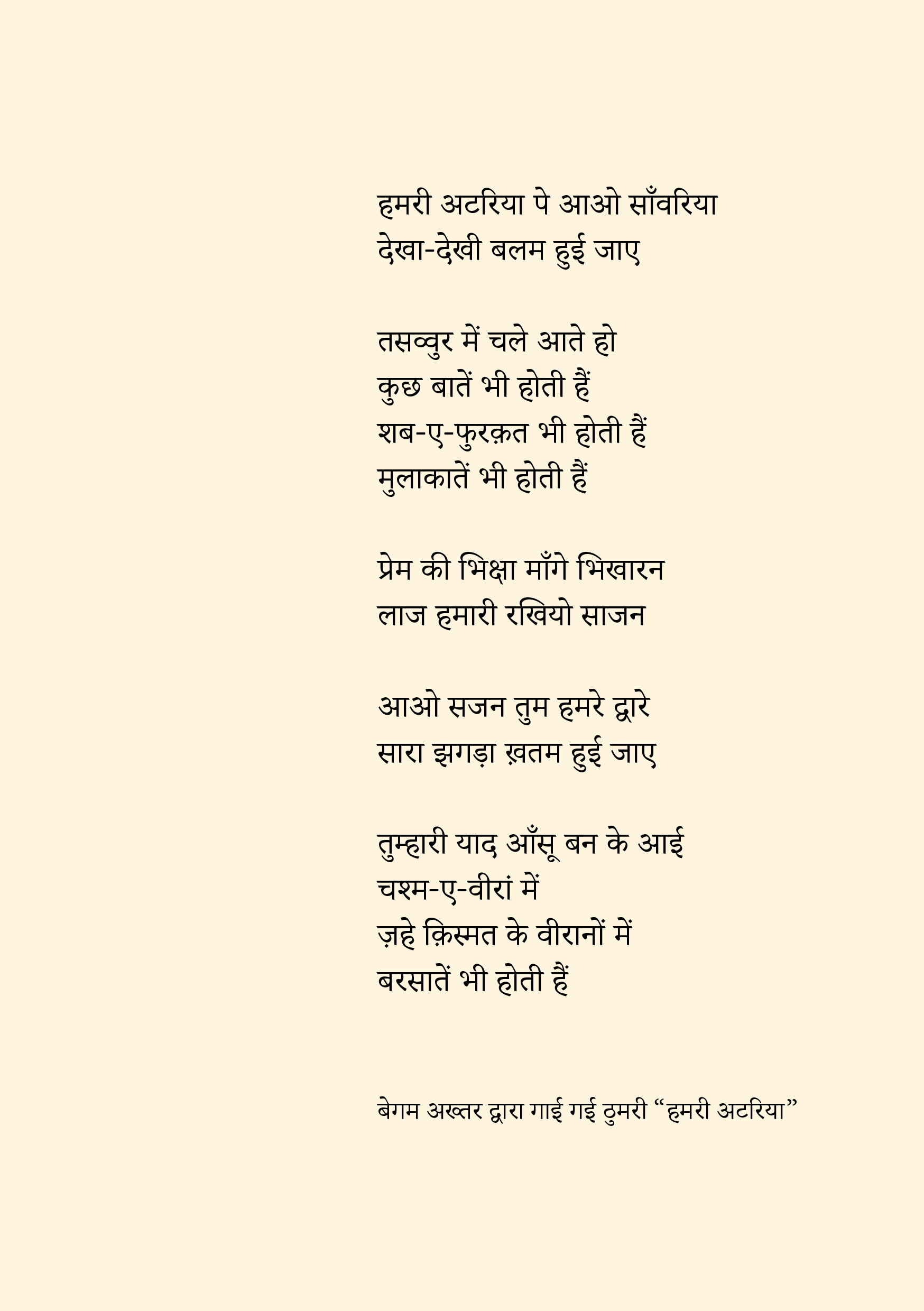
Dekha Dekhi
Women Thumri Artists: Unveiling Varanasi's Rich Regional Legacy
This project explores the evolving contexts of thumri, a cornerstone of the tawaifs and other courtesan communities in nineteenth-century North India. It seeks to unravel their historical evolution and the roles of feminism and politics within these regions.
We examine the historical positioning of these women artists within various socio-political issues, both in the past and the present. Furthermore, we investigate how this art form has adapted to contemporary media, revealing insights into these women's current status and societal portrayal.
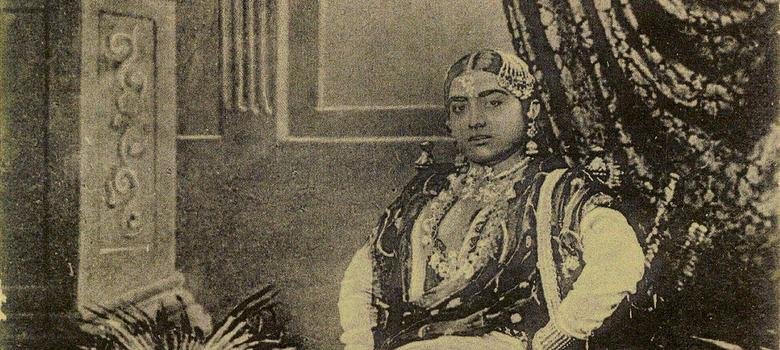


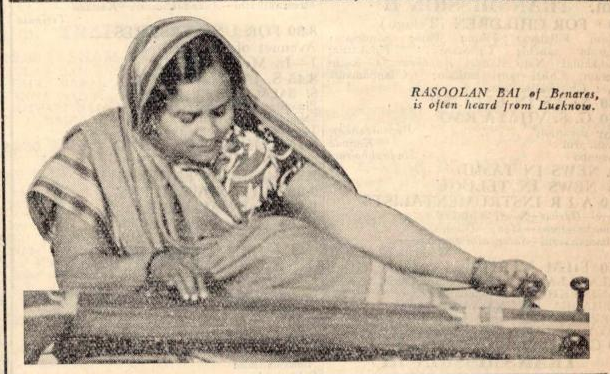


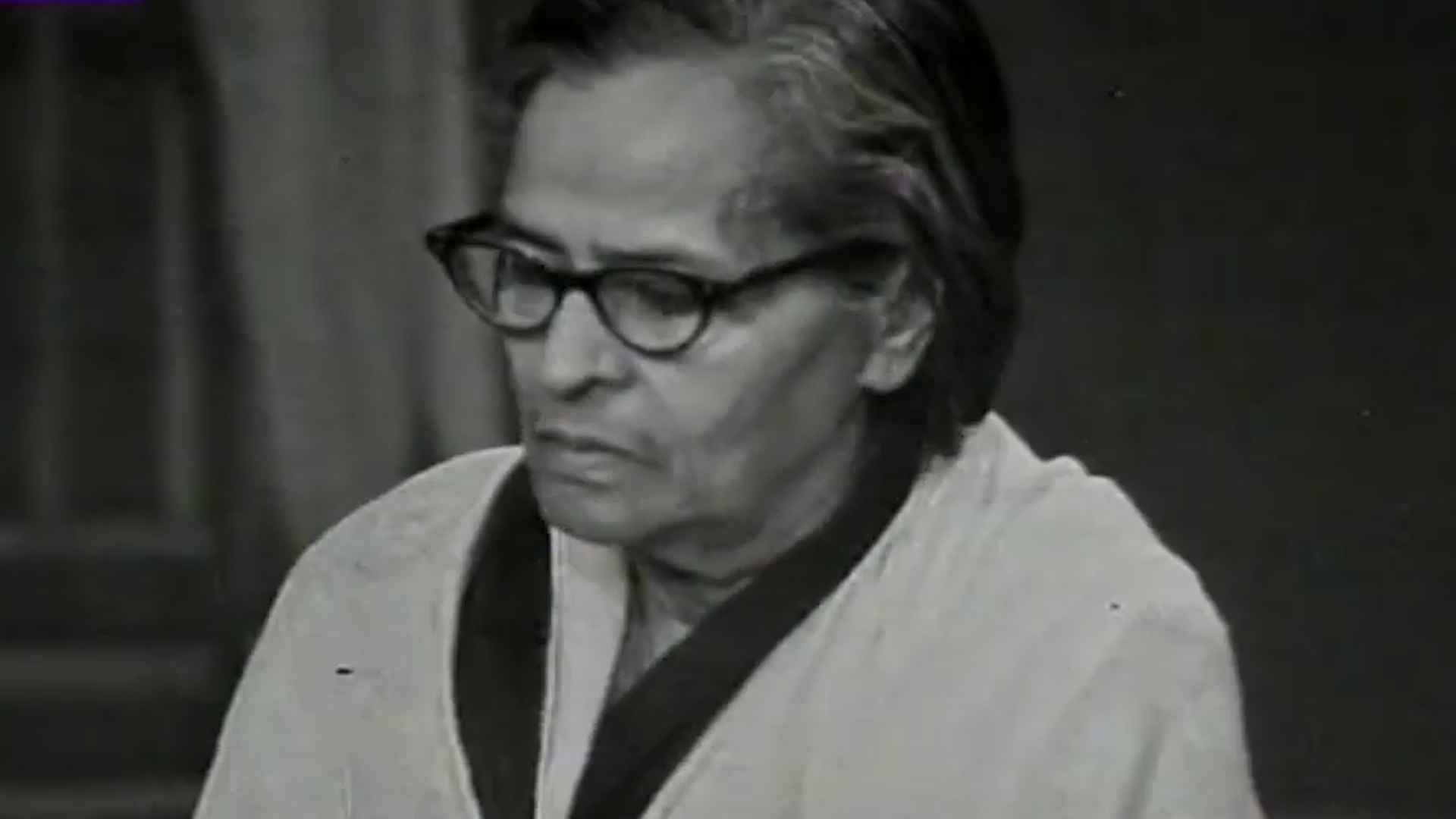

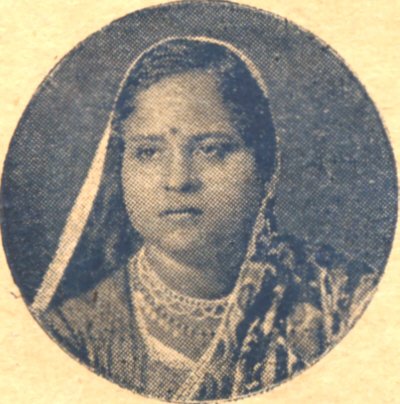

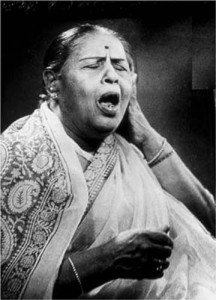

Portraits
The Youngest Generation of Thumri Singers Carrying Forward the Tradition in Present-Day Varanasi.
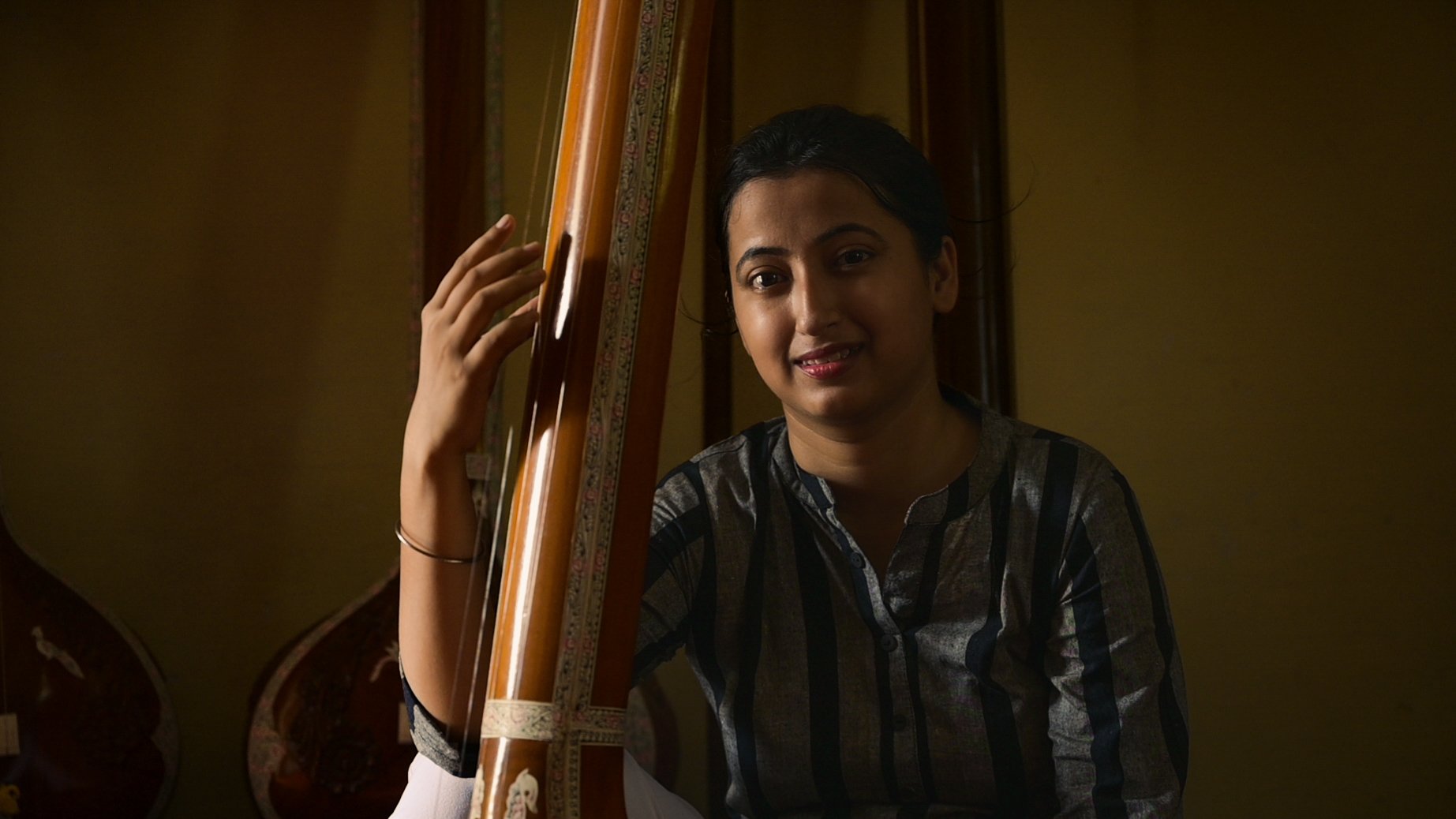

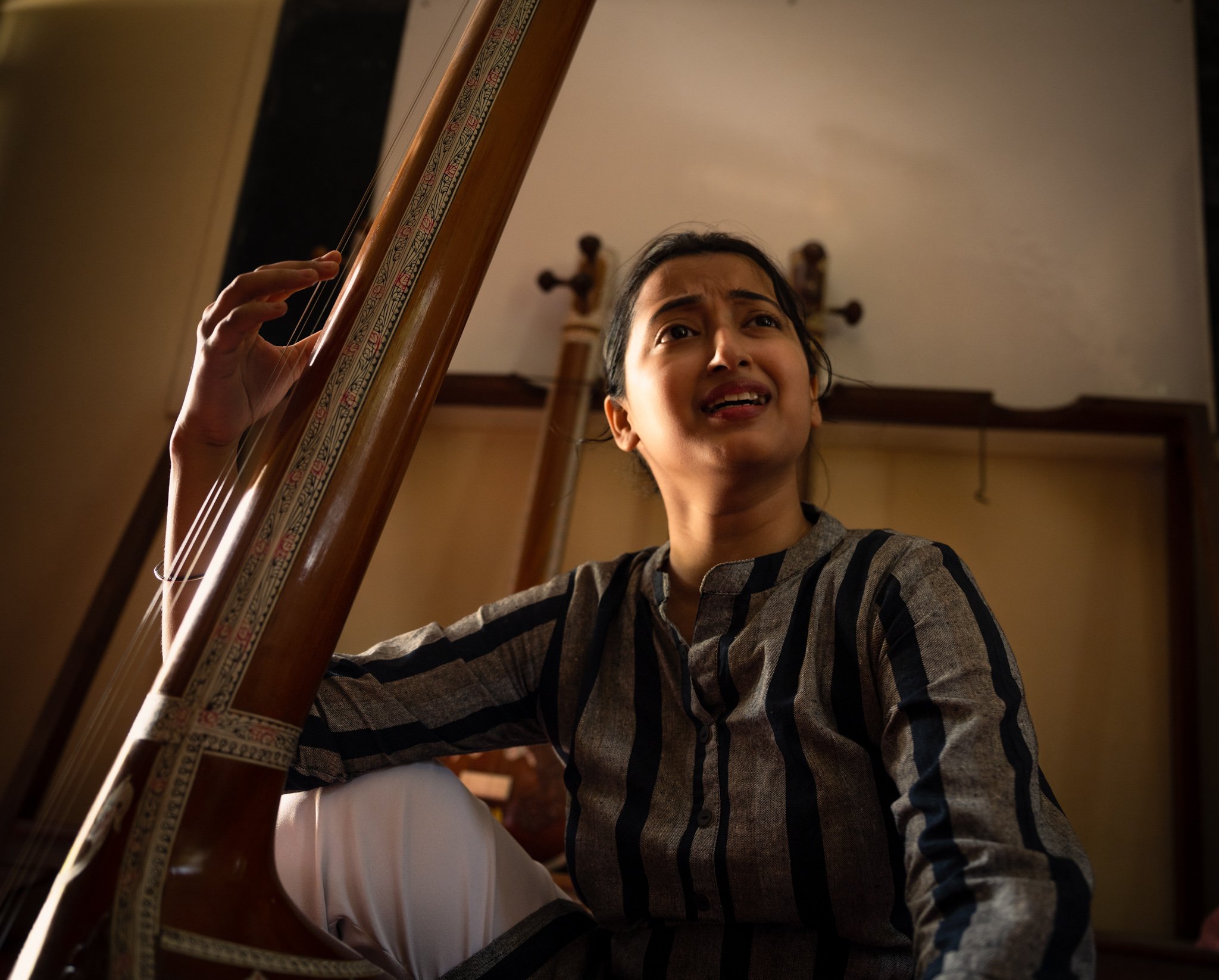
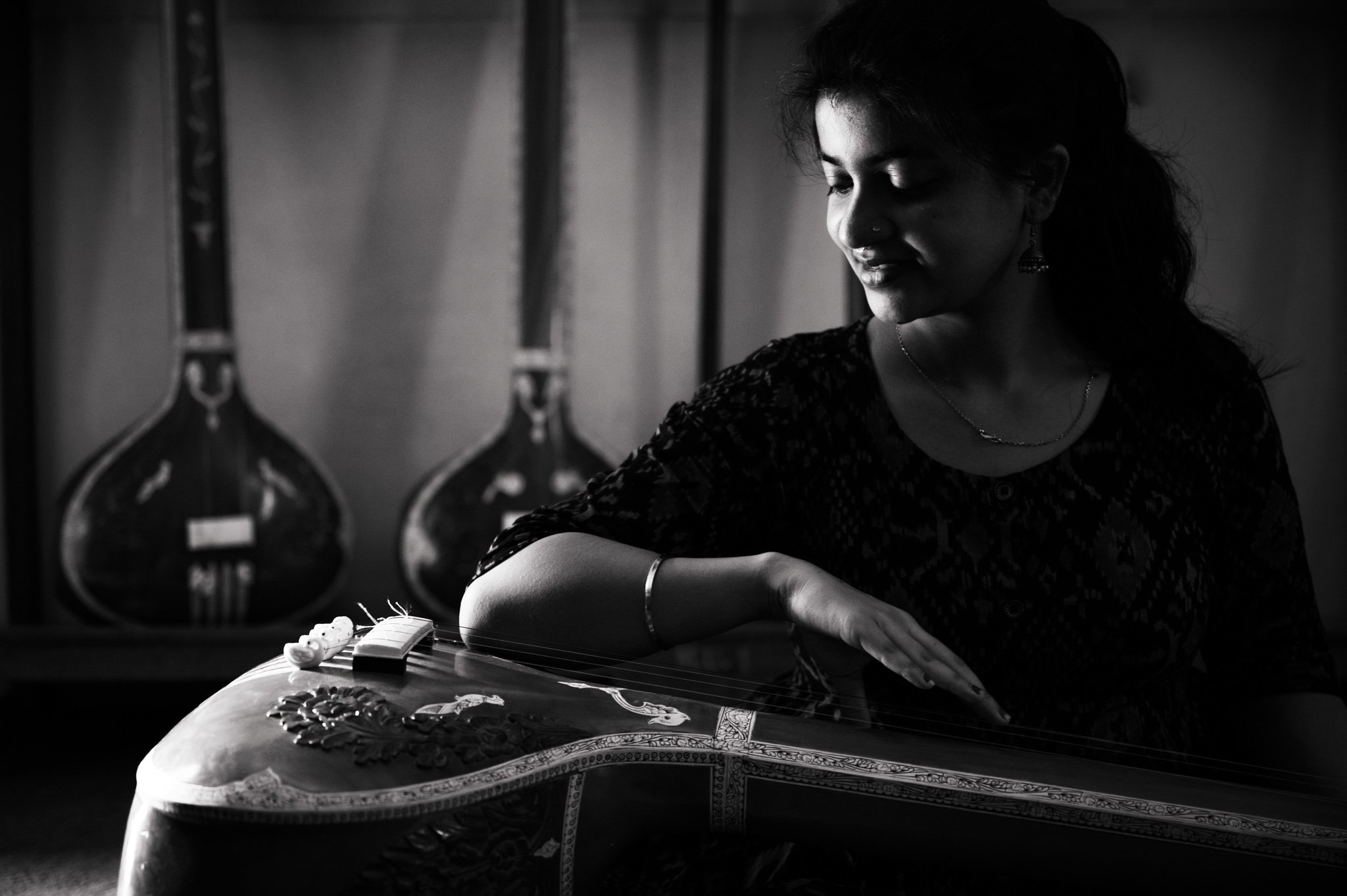


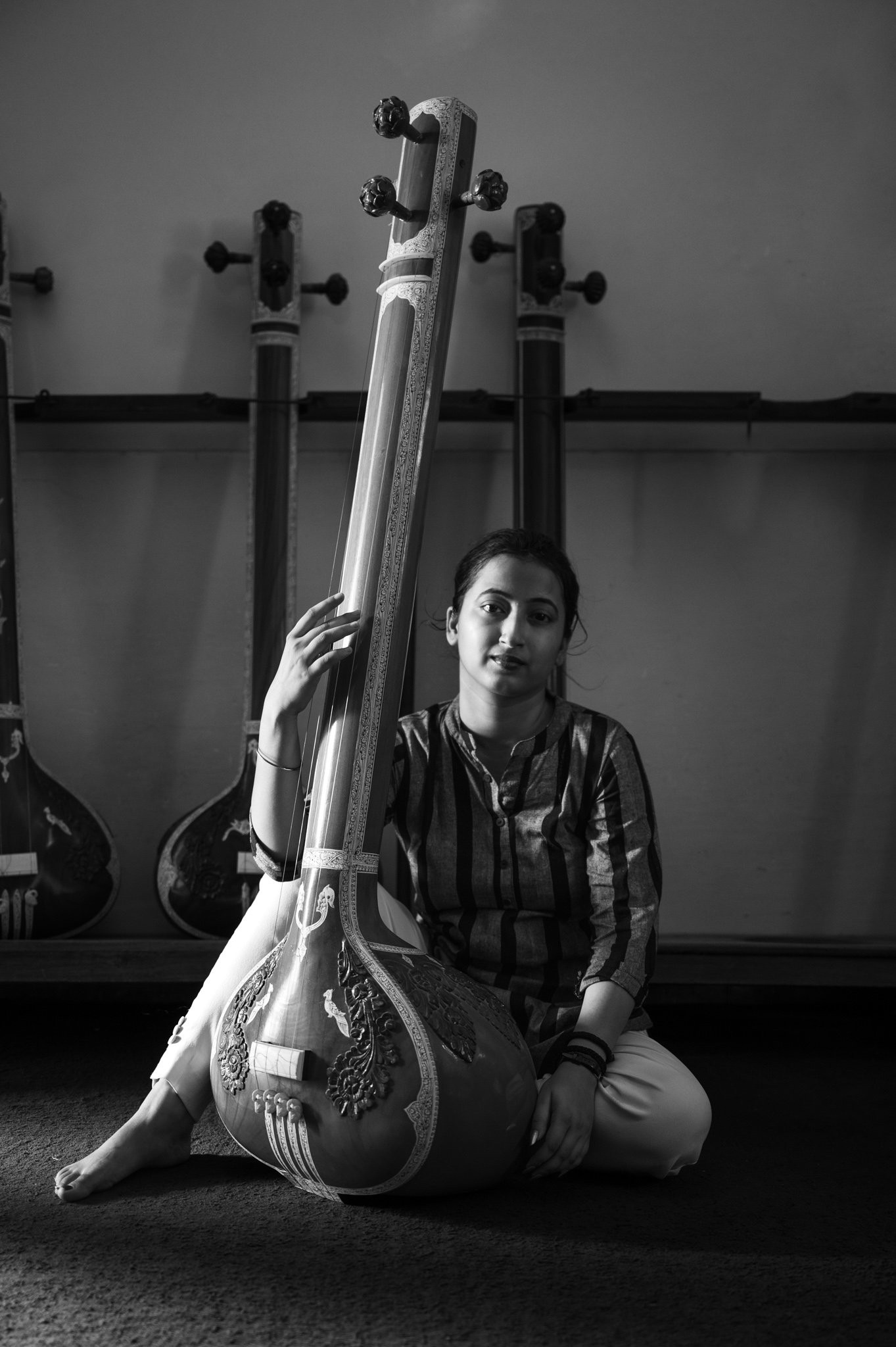
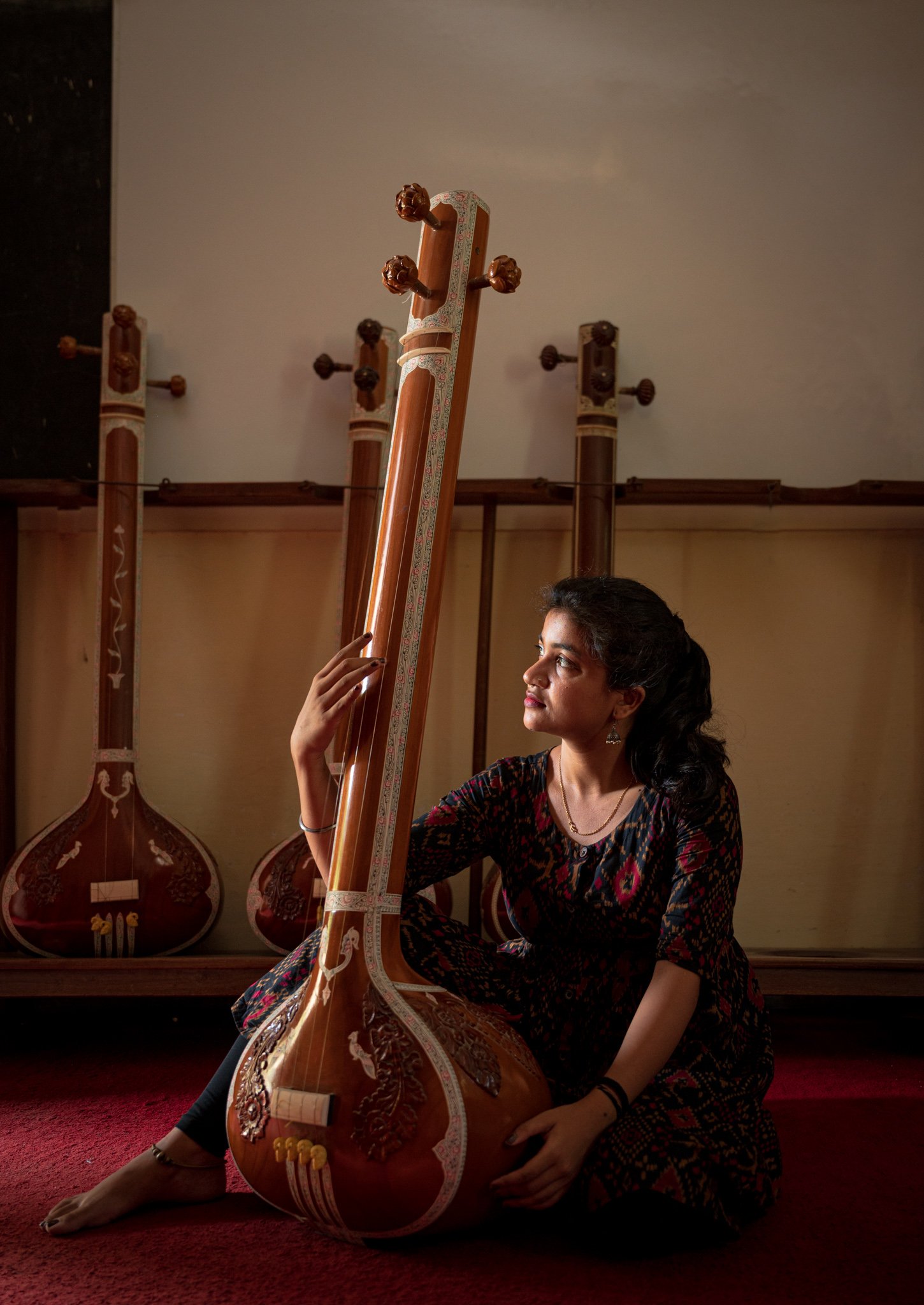

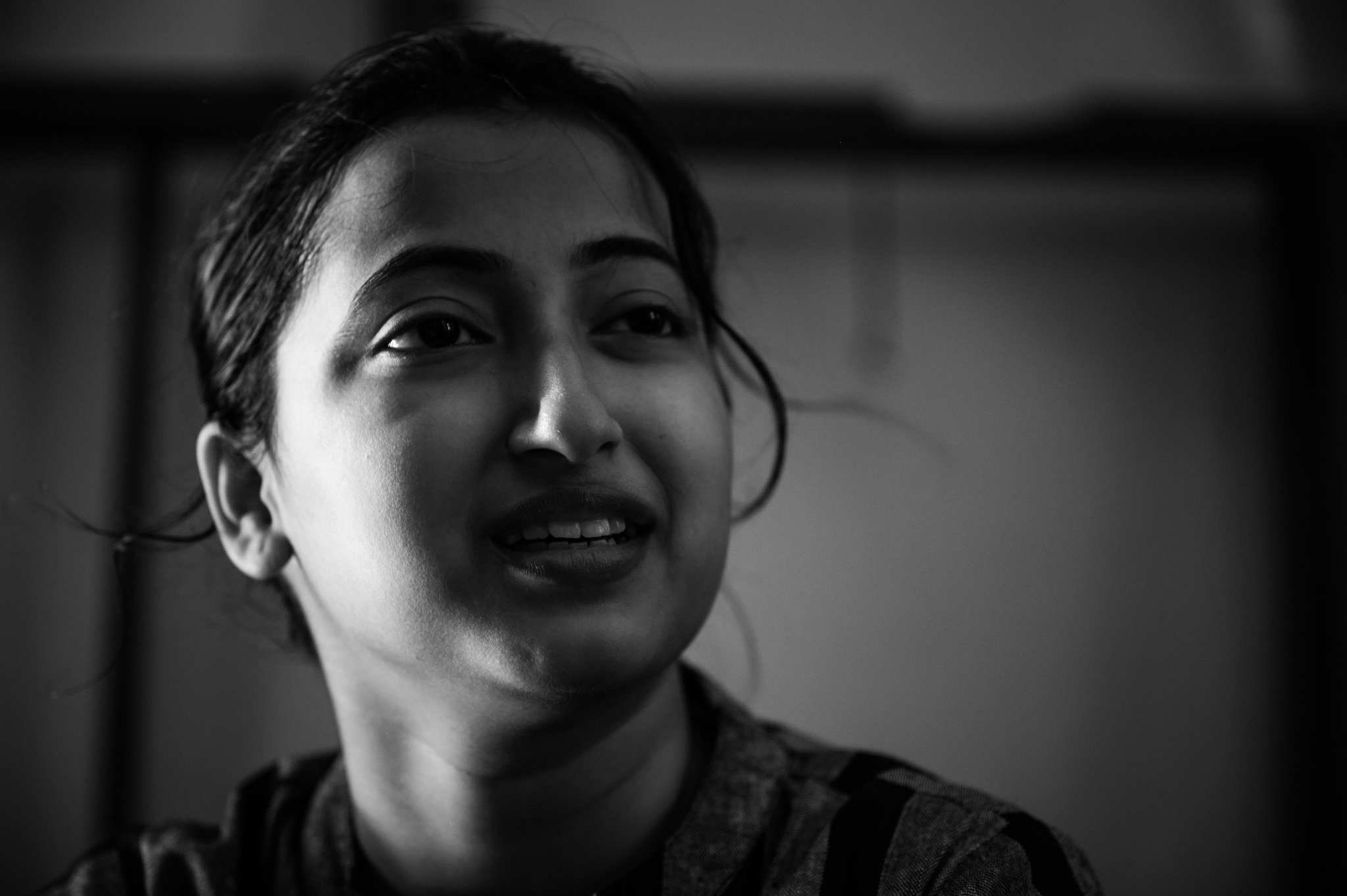

Research
Thumri is rooted in the world of women in eastern Uttar Pradesh and Bihar. The form it is recognised today evolved as a court art in late 18th and early 19th-century Awadh, where it was sung by courtesans who performed for royalty and nobility, both in the kotha of the durbar. They drew from the musical repertoire of desi gana, that is, songs of the soil and music of the household. The narrative voice of the thumri has always been female, making it the feminine voice in Hindustani classical music.
Despite that, professional singers gained legitimacy only if they got taalim from men. With an ustad, they were seen as artists.
Without them, they were mere entertainers. Even today, thumri is described as ‘light classical music,’ somehow diminishing its importance in the overall scheme of Hindustani classical music because it’s associated with women and its seductive nature.
On going through various available articles, archive videos, and interviews of thumri artists, one comes across multiple events in their lives, which tells us a lot about the socio-political positioning of these women artists in various parts of history. From events where these artists had to take fake names or get married to perform on All India Radio to times in history when these women were even among the highest taxpayers of that era. Some even tried to contribute their part in the fight for independence in their ways, but their effort was not acknowledged and went unaccounted for just because they came from a ‘not so respectable’ part of society.
Even today, media representation of this art always connects them to the courtesan era even though now it’s an eminent part of most households and women's spaces in various forms such as Kajri, Chaiti, etc., which are art forms derived from the thumri style itself and are sung in most social gatherings in most of eastern Uttar Pradesh and Bihar.
Experience Design
Exploring Thumri's Historical Significance: Delving into the Archives and Media Representation
We delved into the rich Thumri archives and examined its portrayal in mainstream media, recognising its profound historical significance. Our journey led to creathe ting a triptych video art piece with compelling testimonies from contemporary artists. These exhibits were showcased in a space meticulously designed to replicate the immersive experience of a traditional mehfil."
Space Design
An attempt was made to recreate a similar experience to that of a mehfil, complete with pardas, baithak settings, and stages for performances.

